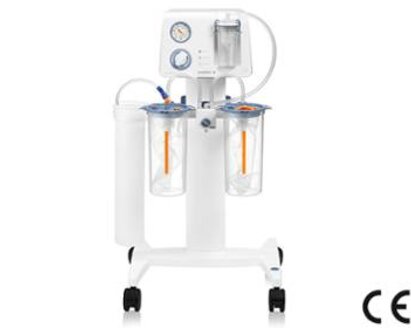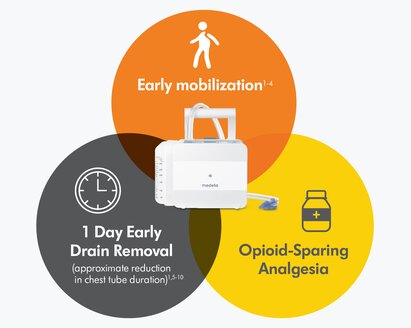Key Message
Digital chest drain data drives the cycle of innovation in chest tube management.
Introduction
At the AATS 104th Annual Meeting in Toronto, Medela sponsored a Drainology Symposium, with a focus on new perspectives in postoperative management of thoracic surgery patients.
Dr. Robert J. Cerfolio (NYU Lagone Health) in his talk titled “How Soon Should We Remove a Chest Drain Following Anatomic Lung Resection?” shared his approach to chest tube management post-pulmonary resection. He emphasizes the importance of drainology innovation and challenging traditional practices for the benefit of patients and clinicians alike.
Challenging Dogma
Dr. Cerfolio underscored that surgeons should lead the charge in re-evaluating long-standing practices, taking calculated risks, and embracing new approaches that may initially face resistance but hold potential for significant advancements in patient care.
Radical Approach to Chest Tube Removal
He shared his pioneering practice of removing chest tubes in the operating room immediately after surgery. Although this method may seem unconventional, Dr. Cerfolio highlighted that many once-controversial practices are now routine.
Rationale and Benefits
Chest tubes are associated with pain, hindered mobility, and patient discomfort. Removing them earlier can reduce these issues and lessen the workload on recovery staff. Over the past 6 years, he has transitioned from removing tubes within 4 hours to removing them in the OR itself.

Turning Science into Care
Out of 140 initial cases, he noted that 8 out of 43 lobectomy patients required reinsertion of a chest tube due to subcutaneous air. By analyzing digital air leak data, he identified a pattern—patients with air leaks between 50-75 ml/min—and adapted his approach to include pigtail catheters in these cases, resulting in more patients leaving the OR chest tube-free.
Innovation Culture: Dr. Cerfolio emphasized the importance of:
- Applying a scientific mindset to new ideas.
- Collecting reliable, relevant data.
- Sharing findings and using failures as learning opportunities.
- Ensuring that innovations offer clear benefits, such as improved patient outcomes, cost savings, and better clinician satisfaction.
Dr. Cerfolio’s approach underscores that thoughtful experimentation backed by data can pave the way for practices that better serve patients and healthcare professionals.


















